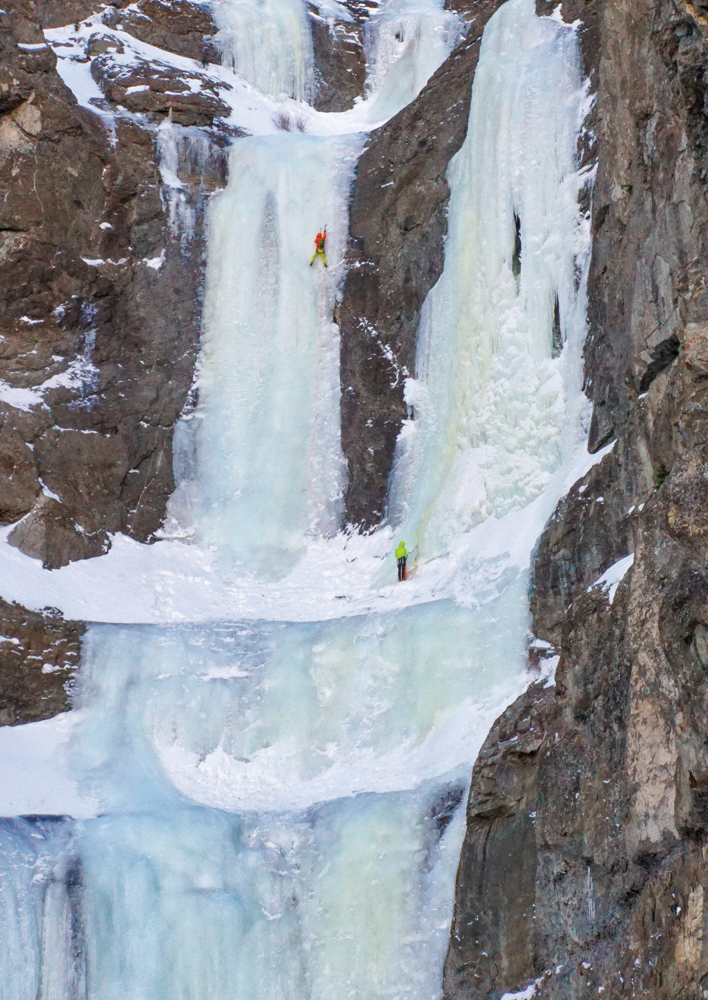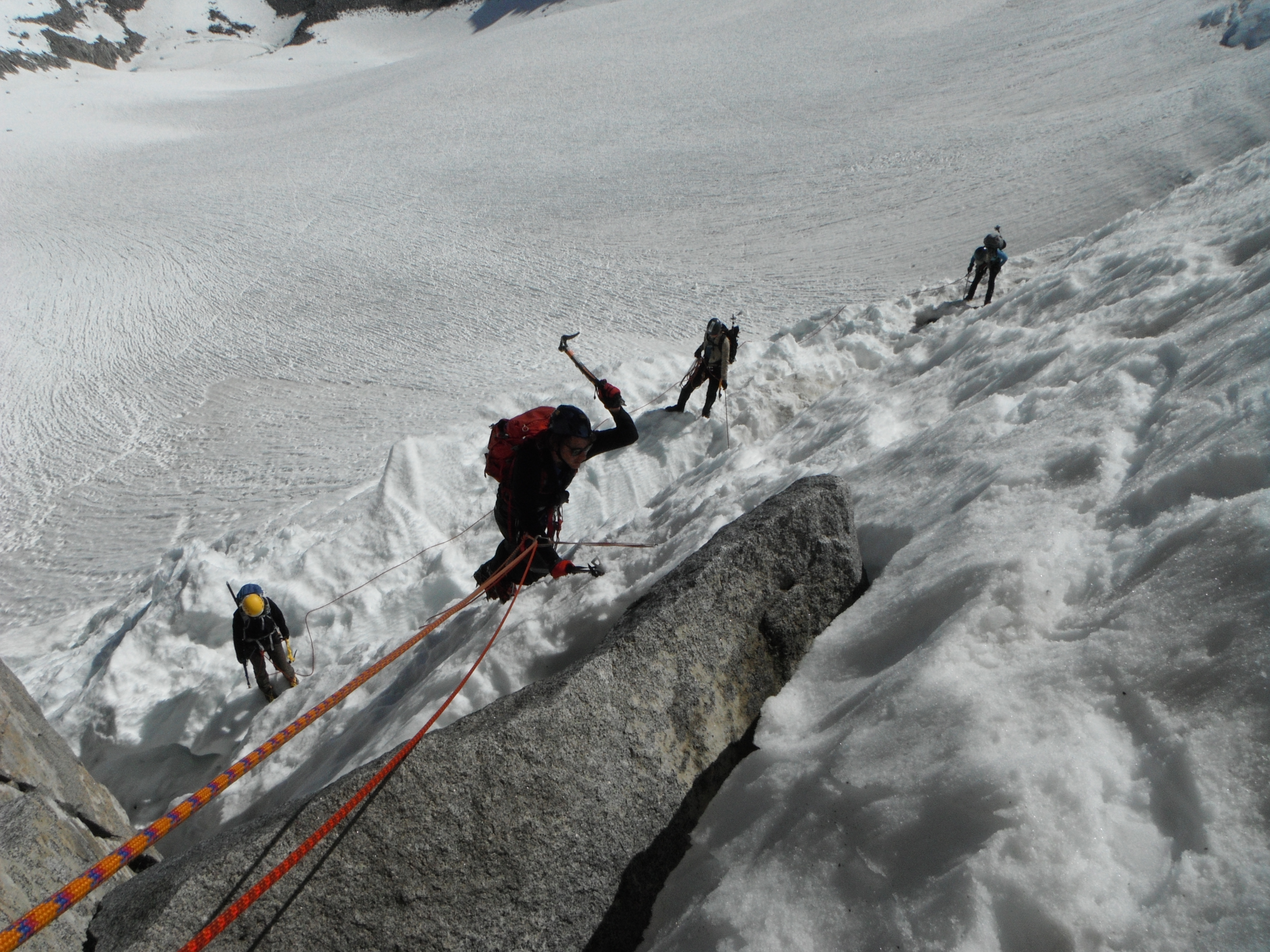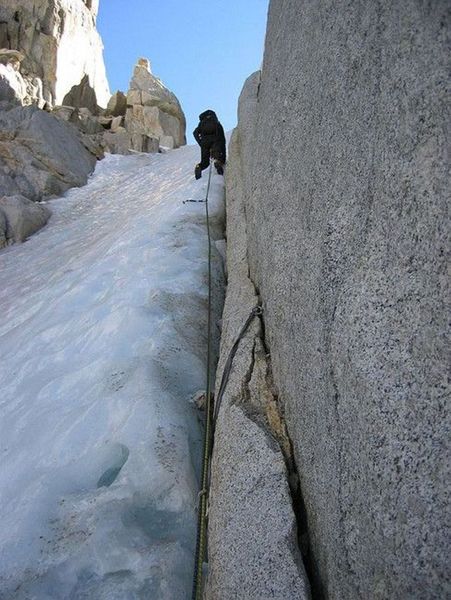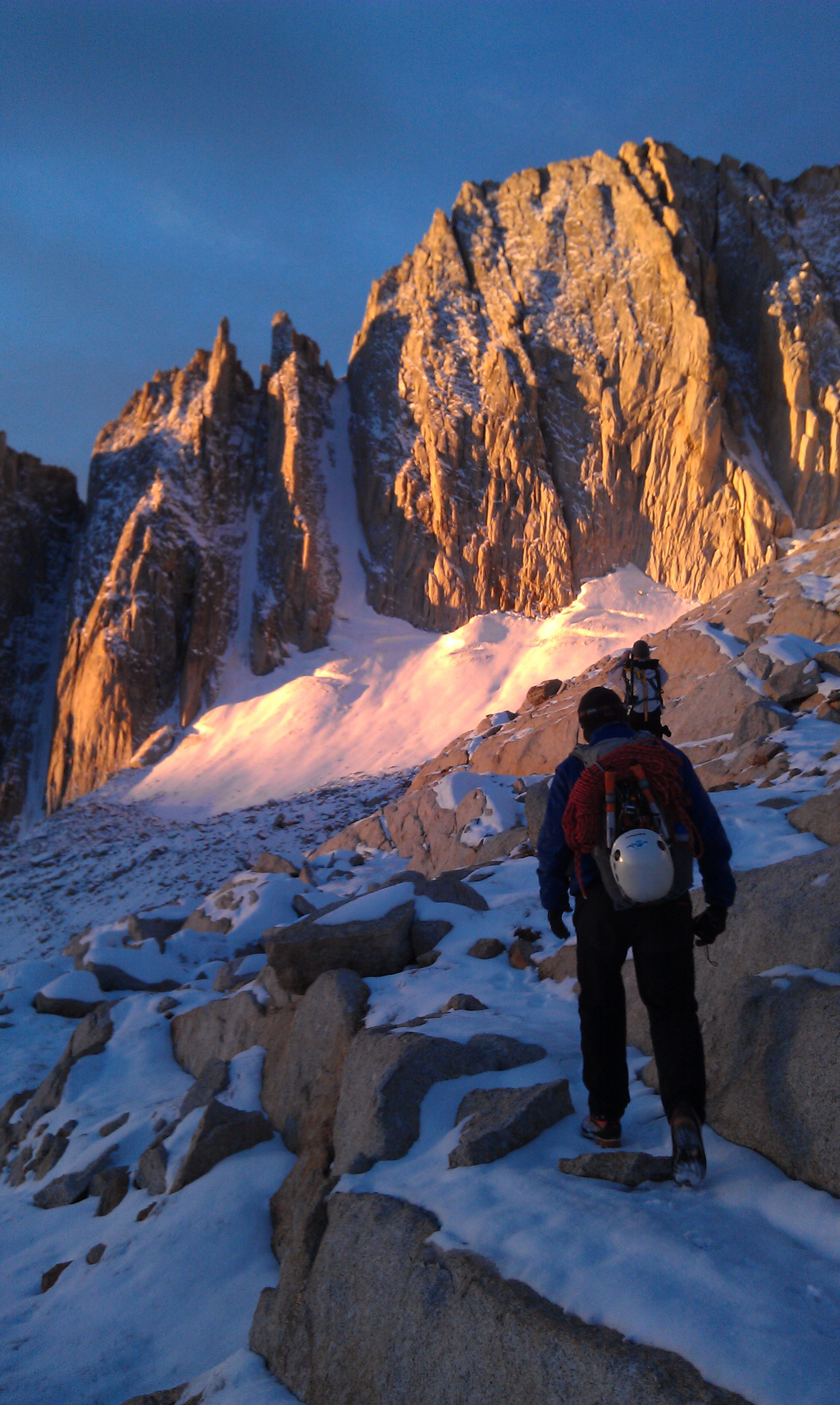
Happy news friends, ice climbing is never over! How? Because "ice climbing" includes not just climbing water ice, but also the spring "alpine ice" season, summer glacial ice climbing, and even fall couloir climbing. Yesssss! Amazing and true. :)
Let's start when it's too cold to rock climb anymore -- with freezing late fall and winter temperatures. As the creeks and cascades harden, water ice climbing season begins, with the pillars, faces and gullies gleaming with hard ice. Lee Vining, June Lake, Ouray, Bozeman, Cody, Canada...we love it. We'll continue kickin' and pickin' steep and vertical ice through the winter using short-shafted "ice tools" with a reverse curve pick and sharp vertically oriented ice climbing crampons, from November to March. This continues while winter snow is falling readying for the "next season" of ice climbing, which is just around the corner.
 [MAA team climbing over the bergschrund on an ascent of the famous U-Notch route on North Palisade]
[MAA team climbing over the bergschrund on an ascent of the famous U-Notch route on North Palisade]
Sometime around April in the Sierra, as the water ice melts away, all that winter snow continues to condense and harden. About the time we no longer need those double boots, steep couloirs in the mountains are hard enough to climb. This is the "alpine ice" season a.k.a. as the time to climb Round Top, Tallac, Baldy, Red Slate, Mendel and the like. Specifically, this is "névé climbing", which is old snow that hasn't yet been around a year. Névé has gone through enough freeze / thaw cycles that it can be climbed with two tools -- either a mountain axe and a ice tool, or two hybrid tools -- and rock pro and snow pro can be used as you simul-climb with your team for thousands of feet.

[Climbing a north facing couloir using two tools and both ice screws and rock pro, this type of ascent allows a climber to use all their training]
These couloirs and faces provide direct access to the glorious mountain summits. Days are longer and the high peaks are warmer - make sure you get an early start and are back to camp for a late lunch before the rocks and ice start coming down!
Once the névé is hard enough to take an ice screw or very resistant to shoveling, it is classified as "firn" and is a dream to climb, because it takes picks with less effort than water ice and yet is very secure. To climb alpine ice, the technique is a little different that water ice climbing. Typically a climber will keep their tools lower, climbing with them in low dagger, or mid-dagger position. This allows a climber to quickly and confidently crawl up steep snow slopes without having to use an overhead swing.
In addition to learning this, MAA provides comprehensive training how to use ropes, team self arrest, place protection and be a member of a team for this type of "ice climbing" in our Snow 3 and Snow 4 classes.
Which ice axe to choose? How do you know which is the best one for your chosen application? Outdoor Gear Lab is a trusted source on all kinds of gear; here is an excellent review of all piolets classified as "ice axes" - which is all straight shaft or slightly bent shafts models, which are good for everything from mountaineering to steep hard snow and even low grade water ice.
 [MAA expedition team on the Tres Montes route in the Mont Blanc Massif]
[MAA expedition team on the Tres Montes route in the Mont Blanc Massif]
While alpine ice season is underway, the biggest mountains in North America are coming into shape. Sometime around May, and continuing into the fall, ice climbing now expands to include the glaciers and high mountains, full of glacial ice, tumbling seracs, and snow and ice in all it's wonderful forms. The technique we practiced in the winter and spring can be applied to the steep, hard slopes of many glaciated mountain faces and aretes. Think Mt. Rainier, Mt. Shasta, Mt. Baker, and Alaska.
And it's not over yet...right about the time the crevasses are too numerous to negotiate, usually around September, we can return to the high peaks for a few last ice climbs until November. Nothing like a Halloween climb up the North Couloir of North Peak. The firn that has been hardening for many months is now dense, dirty, rock-hard snow. It will take ice screws and climbs almost like water ice, with much less shattering. We can touch the summits once more before winter closes in and the cycle begins all over again.

[MAA members approach North Peak, North Couloir route on an early fall morning]
And if this wasn't great enough, if you can travel north (or south) far enough, or high enough, in any season, you can always find "ice climbing". All types. Guaranteed. You just need to know where to go.
So you see, ice climbing season is never truly over. Keep your tools sharp!


